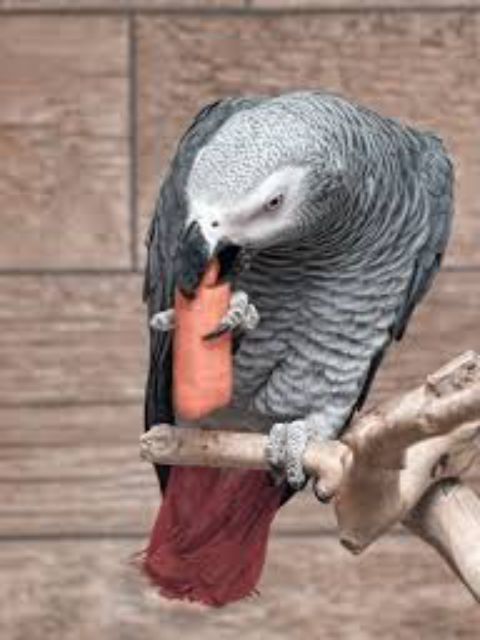The Congo African Grey can be a picky eater if the right food isn’t offered from day one. In most cases, people get their parrots from a pet shop or another person who can no longer care for them, and often those places are feeding the ‘cheapest diet possible’ which is nothing close to what it should be.
African Greys are spectacular birds and anyone who has the pleasure of owning one is quite likely grateful for their amazing intelligence. That being said, proper care, feeding, and trick training can go a long way toward ensuring the amazing African Congo Grey lives a long and happy life.

Feeding Equipment That Congos Need
Your Congo African Grey will require feeding bowls, a bath area (or shower perch to shower with you!), a variety of perches, and a spacious aviary whether it’s an indoor or outdoor cage.
A cage grate keeps him from walking in his own droppings while perches of different sizes will keep your bird from developing any foot sores. Parrots can quickly develop arthritis from sitting on the same perch day in and day out. We call these parrots “perch potatoes” and it’s very important you don’t support that type of habit!
Put sandy or cement perches in high-traffic areas around food dishes and in the middle of places so your bird has to go onto them to get to where it wants to go, this way, you won’t have to spend money on expensive grooming appointments.
What Foods Do Congo African Greys Like
The more variety you offer your parrot, the better. That goes for toy selection and food selection.
It’s best to keep your parrot’s cage in a space in the home where lots of people will be so that he is easily involved in the activities going on.
African Greys should be getting a variety of dark, leafy greens and any vegetables that are dark and colorful like sweet potato, broccoli, squash, and fresh sprouts. Sprouting for your parrot is one of the best things you can do for your bird’s diet.
Your parrot should also be on an organic pellet, not that colorful stuff! The shots provide a good portion of their nutrition on a daily basis. A daily assortment of fresh fruits and vegetables will also add significant and necessary nutritional value to their meals.
Seeds and nuts (no peanuts) are high in fat and should only be given as treats for meeting new people, stepping up without biting, or performing a trick. As the main meal source, seeds are high in fat and could cause health problems like obesity in the long run. Limit the seeds and give them pieces of egg, rice, and dried unsweetened cereal. With a good diet plan, Congo African Greys can live up to seventy years.
